When you’re working on SEO, one of the first questions you’ll face is whether to target long-tail or short-tail keywords.
Should you focus on broad terms that bring in huge search volumes, or go after specific phrases that may drive fewer visitors but attract people who are ready to act?
Both keyword types play an important role in your strategy.
Short-tail keywords help you reach a wider audience, while long-tail keywords allow you to connect with searchers who know exactly what they want.
The key is finding the right balance between the two so you can maximize visibility and conversions.
In this post, I’ll walk you through the differences between long-tail vs. short-tail keywords and strategies to use them effectively in your SEO efforts.

So, without any further ado, let’s get started.
Table Of Contents
1 Understanding Long-Tail vs. Short-Tail Keywords
When you’re building your SEO strategy, it’s important to understand how long-tail and short-tail keywords work. Both play different roles, and knowing when to use each can help you boost traffic and conversions.
1.1 Long-Tail Keywords
Long-tail keywords are more specific and usually consist of three or more words, such as best running shoes for women.
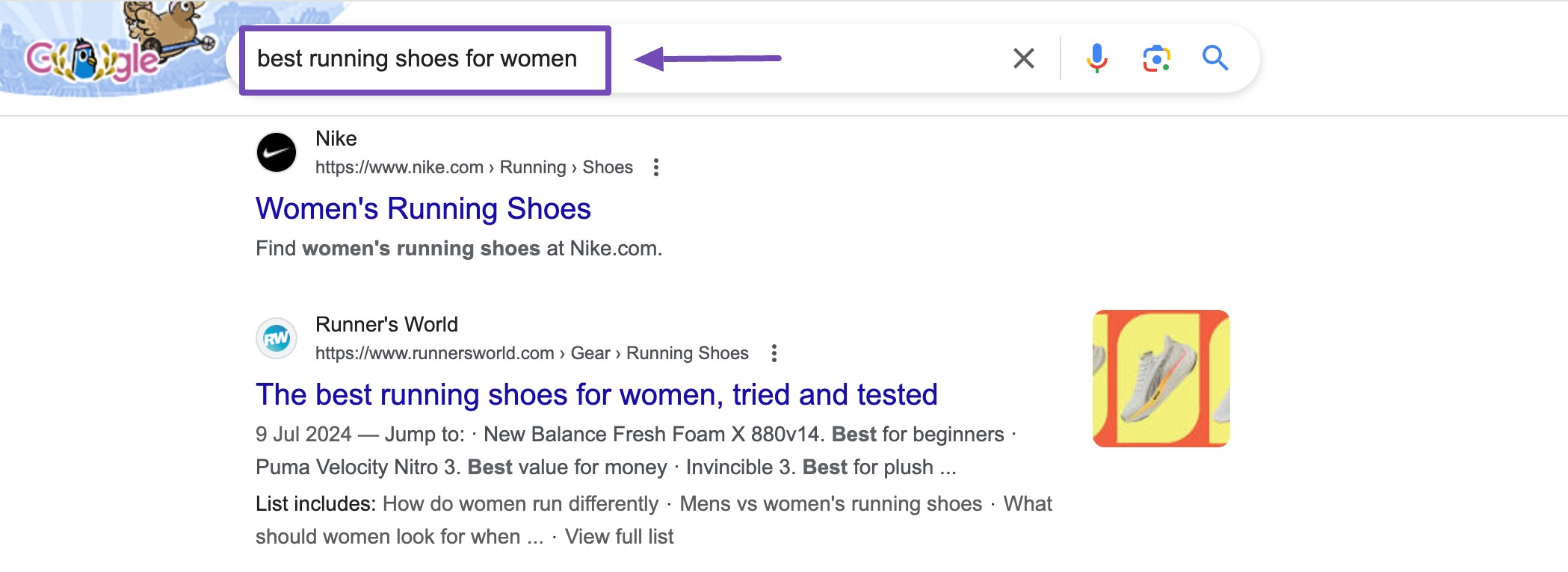
These keywords may not get huge search volumes, but they attract people who know exactly what they’re looking for.
That means the traffic you get is often more qualified and more likely to convert. Since competition is typically lower, you’ll also find it easier to rank for long-tail terms and capture niche audiences.
1.2 Short-Tail Keywords
Short-tail keywords are typically one to three words long and are broad, general search terms that attract high search volumes.
For instance, a keyword like shoes is considered a short-tail keyword.

They tend to drive massive search volumes, but ranking for them can be tough because of the high competition.
On top of that, people searching for these broad terms may have very different intents, some just want information, while others might be ready to buy, so conversions are less predictable.
2 How to Find Short-Tail and Long-Tail Keywords
You can find short-tail and long-tail keywords using Google Keyword Planner.
To get started, log into Google Keyword Planner through your Google Ads account.
Once you’re in, select the option to Discover new keywords. This feature allows you to input seed keywords, which are general terms related to your industry or topic.
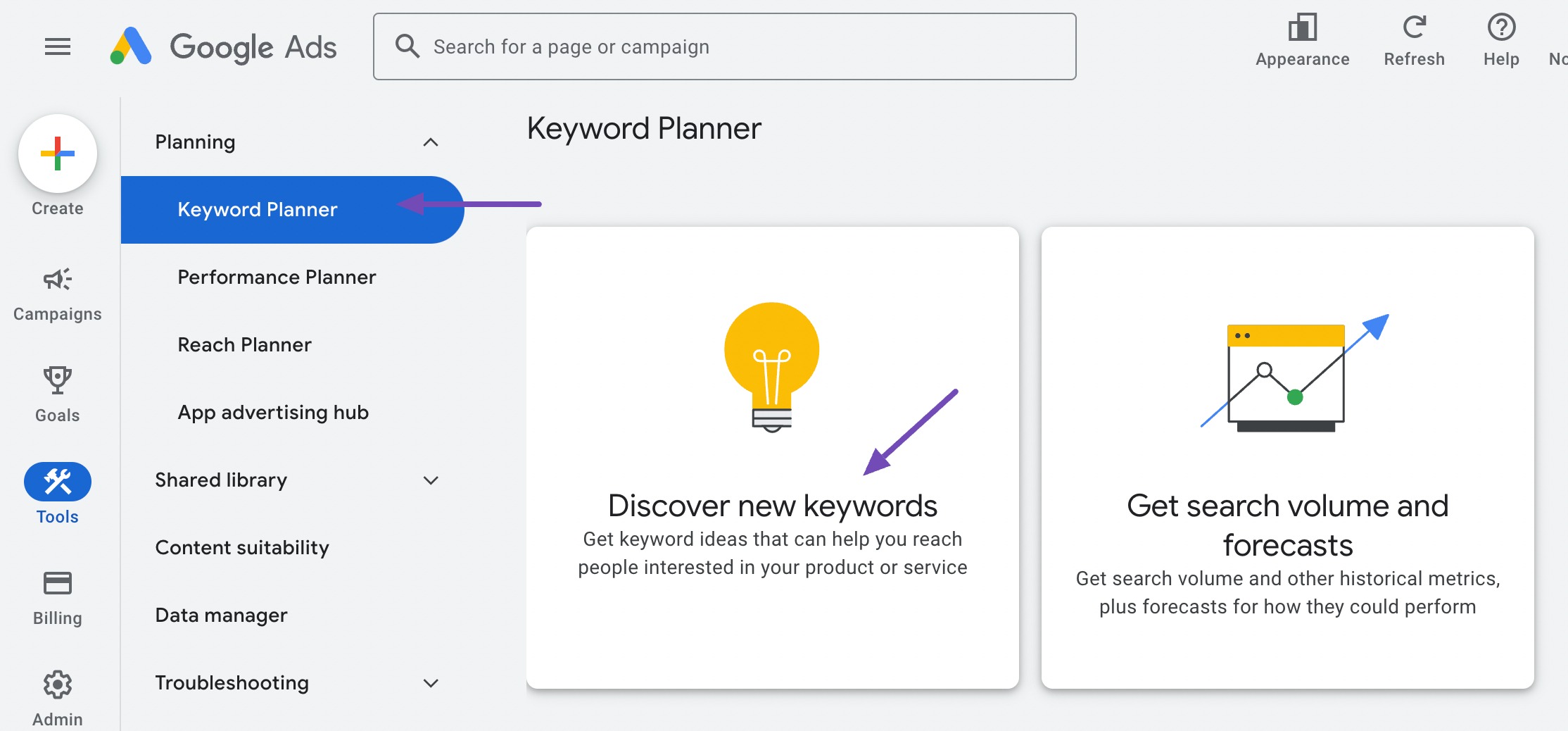
For short-tail keywords, enter one or two broad terms that represent the core of your content or business offering.
For instance, if you’re in the fitness industry, you can start with terms like fitness or exercise.
Google Keyword Planner will then generate a list of related keywords, including search volume, competition level, and trends for each term. Focus on the suggestions that are one to three words long, as these are typically considered short-tail keywords.
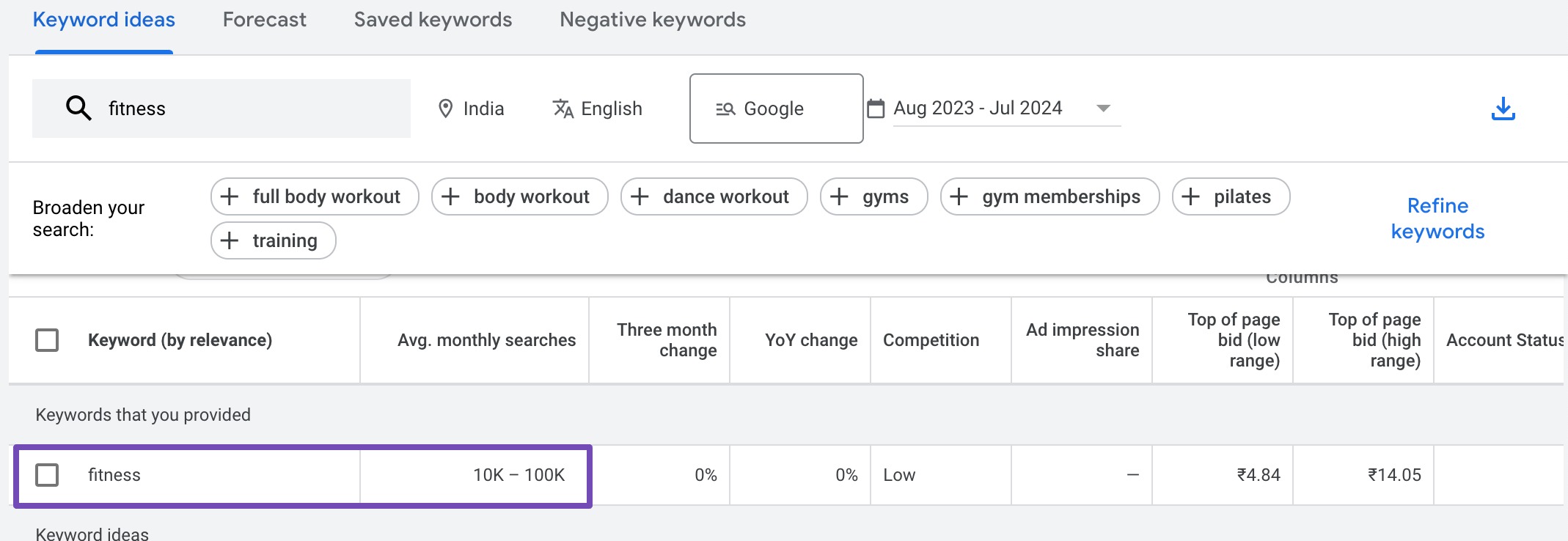
You can also refine your search by adjusting location, language, and date range filters to match your target audience better.
Unlike short-tail keyword research, where you input broad terms, long-tail keyword research involves entering more specific phrases related to your niche.
For instance, instead of just fitness, you might enter the best home workouts for beginners or how to lose weight with yoga.
Once you input these specific phrases, Google Keyword Planner will generate a list of related keywords. These suggestions often include longer, more detailed search terms—perfect examples of long-tail keywords.
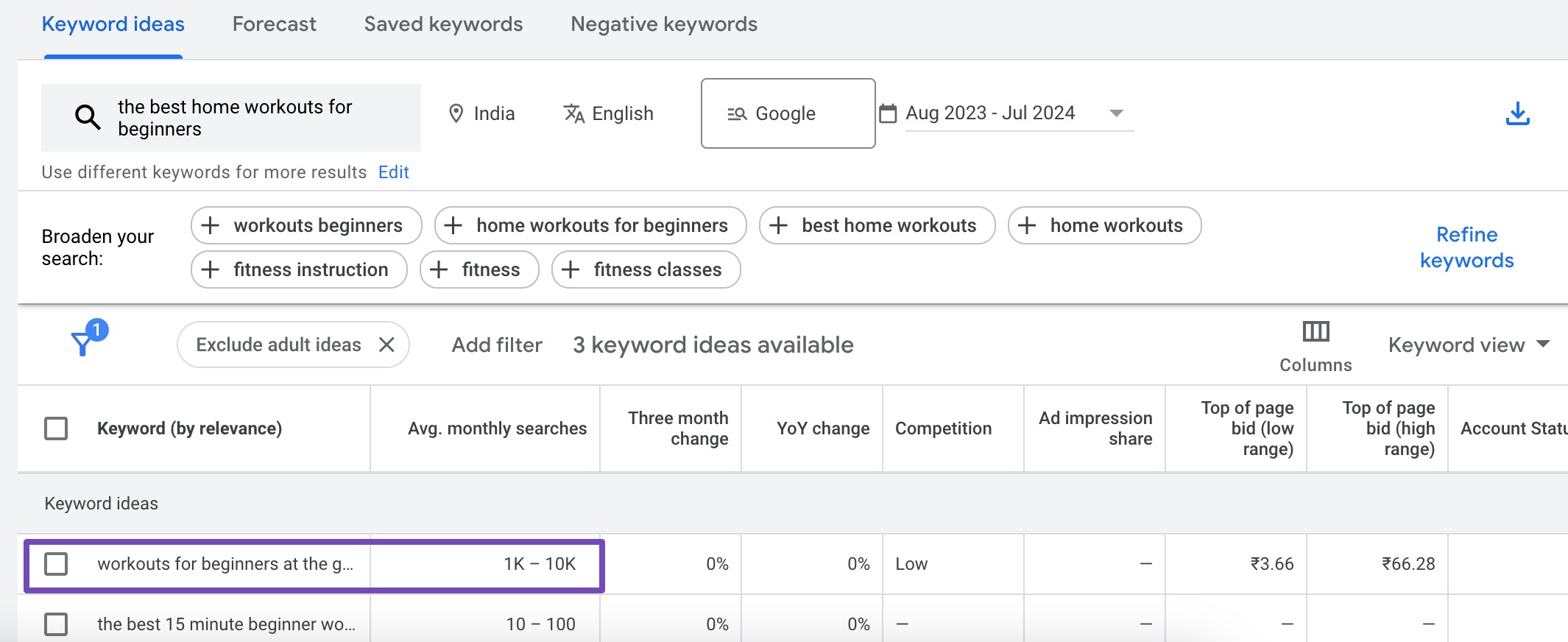
Pay attention to keywords that are three or more words long, as these usually reflect more specific intent.
While long-tail keywords generally have lower search volumes, they’re typically less competitive, making them easier to rank for and more likely to result in conversions.
Once you’ve identified potential keywords, add them to your content strategy, targeting them on high-level pages like your homepage, product pages, or pillar content to attract a broad audience.
Refer to our dedicated article on choosing the right keywords for your website.
3 Finding the Balance: How to Effectively Combine Long-Tail and Short-Tail Keywords
Successfully blending long-tail and short-tail keywords is essential for creating an SEO strategy that captures a wide range of search intents while driving meaningful traffic to your site.
3.1 Understand Your User Intent
User intent is the foundation of your keyword strategy. It’s all about knowing what audiences are really looking for when they type in a search.
Short-tail keywords, like digital marketing, usually signal broad intent; someone might just be starting their research. Long-tail keywords, like best digital marketing strategies for small businesses, show a clearer intent; someone wants specific answers or is close to making a decision.

To choose the right type, think about where your audience is in the buyer’s journey. If they’re in the awareness stage, short-tail keywords help you bring them in. If they’re further along and ready to take action, long-tail keywords will guide them to the answers, and solutions, they’re looking for.
If you’re using Rank Math PRO, the Search Intent feature makes this easier. Just click the Show Intent button beside your keyword, and you’ll instantly see its intent.
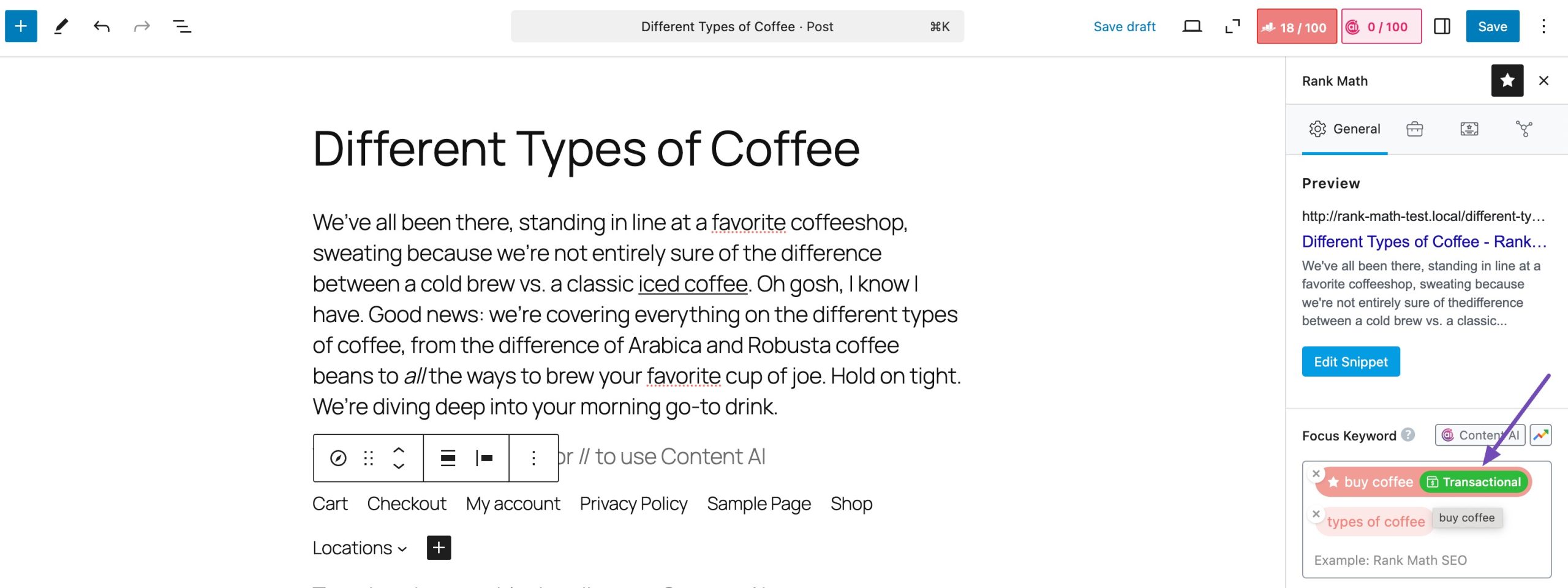
3.2 SEO Strategy Integration
Once you understand intent, it’s time to integrate both keyword types into your SEO strategy.
Short-tail keywords work best for visibility and brand awareness. Add them to high-level pages like your homepage or major category pages. For example, if you run an e-commerce store, targeting running shoes on your homepage helps capture a wide audience.
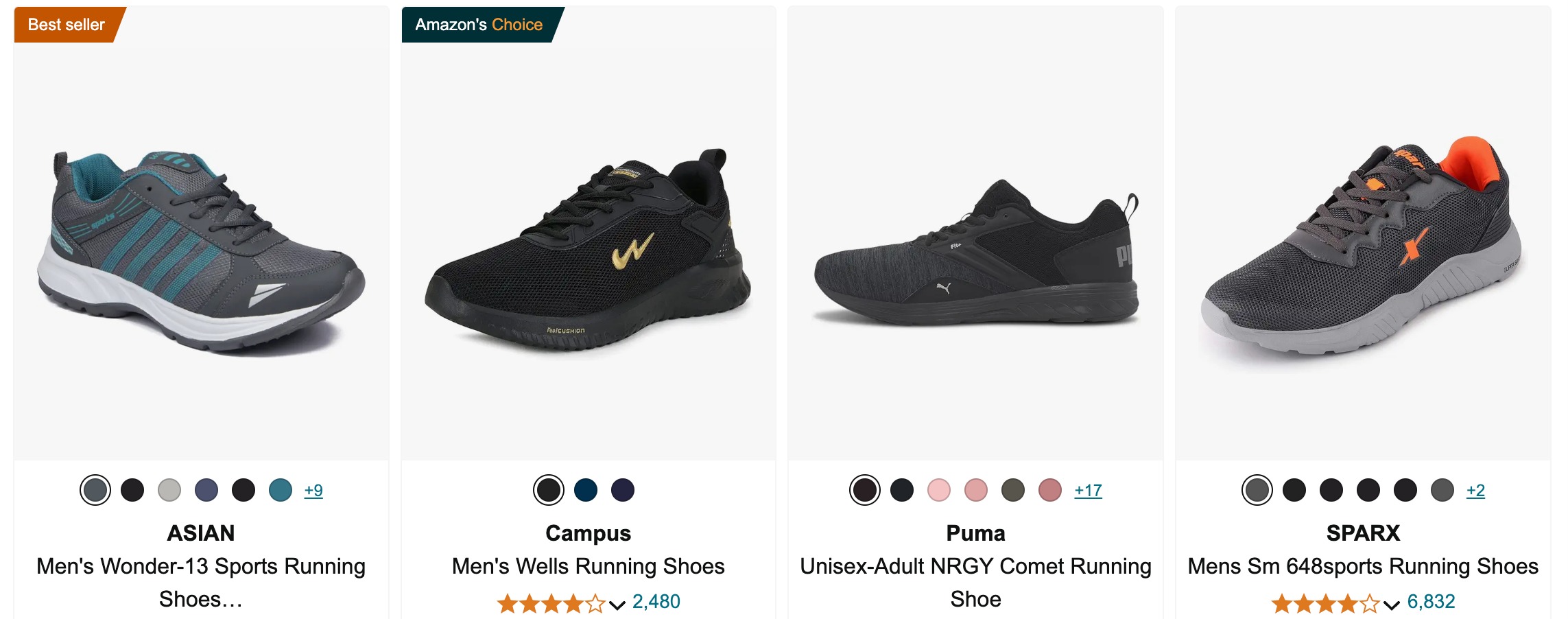
Long-tail keywords are perfect for reaching niche audiences and driving conversions. Use them in blog posts, detailed product descriptions, or service pages.
For instance, a blog post titled Best Running Shoes for Marathon Training targets the long-tail keyword best running shoes for marathon training, attracting visitors with strong purchase intent.
By combining both, you’ll not only expand your reach but also ensure that the right visitors land on the right pages. That balance is what makes your SEO strategy both broad and effective.
3.3 Content Distribution
Distributing keywords or keyphrases across different types of content is important for optimizing your website’s performance.
Short-tail keywords are broad and high-volume, so they’re best placed on high-visibility, high-level pages that represent your core business:
- Homepage (to establish relevance for your main industry terms)
- Main product or service pages (broad category-level targeting, e.g., running shoes)
- Category pages or hub pages (great for brand awareness and capturing wide searches)
- Meta titles, headings (H1s/H2s), and core page descriptions
In contrast, Long-tail keywords are more specific, so they should be placed in content that addresses detailed queries or buyer-ready searches:
- Subheadings and body text (to naturally align with user queries)
- Blog posts (guides, how-tos, comparisons, and listicles)
- Product descriptions (specific use cases like best shoes for flat feet)
- Service sub-pages (e.g., SEO for e-commerce stores)
- FAQ sections (answering niche, intent-driven questions)
By appropriately distributing keywords across your content, you can ensure that your website ranks for both broad and specific search terms, capturing a wider range of search traffic.
3.4 Seasonal or Event-Based Usage
Adjusting your keyword strategy based on seasonality or specific events in your niche can further enhance your SEO effectiveness.
During peak seasons or around major events, short-tail keywords can be particularly useful for capturing a surge in general search interest.
For instance, an online retailer can focus on short-tail keywords like holiday gifts or festive offers during the shopping season to attract a broad audience.

Conversely, during off-peak times or when targeting niche events, long-tail keywords can be more effective.
For instance, before the back-to-school season, targeting a long-tail keyword like best laptops for college students can help capture a specific audience looking for personalized recommendations.
Similarly, a travel blog can focus on long-tail keywords like best winter hiking trails in Colorado to attract visitors interested in specific seasonal activities.
4 Frequently Asked Questions
Which type of keyword is better for SEO: long-tail or short-tail?
Neither is “better” on its own. Short-tail keywords bring higher search volume and visibility, but they’re competitive. Long-tail keywords attract less traffic but convert better because they reflect specific intent. The best strategy is to use both together.
Are long-tail keywords easier to rank for?
Yes. Long-tail keywords usually face less competition than broad short-tail terms, making it easier for you to rank, especially if your website is new or still building authority.
Why are short-tail keywords important if they’re so competitive?
Short-tail keywords help build brand awareness and establish topical authority. They bring in large volumes of traffic, which can expose your site to more potential customers, even if conversions aren’t as high.
How many long-tail and short-tail keywords should I target?
There’s no fixed number. It depends on your SEO goals. A good approach is to use short-tail keywords for visibility and brand reach, then add multiple long-tail variations to target specific search queries and maximize conversions.
Can I use long-tail and short-tail keywords in the same content?
Absolutely. In fact, that’s the best way to balance your strategy. For example, a blog post could target a short-tail keyword like digital marketing while also including long-tail variations like digital marketing strategies for small businesses.
5 Conclusion
Finding the right balance between long-tail vs. short-tail keywords isn’t about choosing one over the other; it’s about using both strategically.
Short-tail keywords help you reach a wider audience and boost your visibility, while long-tail keywords allow you to connect with searchers who are closer to taking action.
By combining both approaches, you create an SEO strategy that’s balanced, effective, and built for long-term growth.
If you like this post, let us know by tweeting @rankmathseo.
